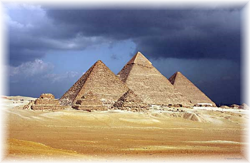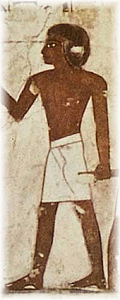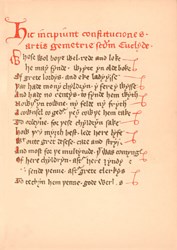Aims and Relationships of the Craft
Morality, Allegory & Symbolism
A brief history of Freemasonry
Sections
Address guide to Lodges in Scotland
Tracing Boards, Working Tools & Other Renditions

Before I get too involved in this I am going to say that whilst I have read up and researched (a bit) on this subject, the history or origins of Freemasonry is made up of opinions and guess work, or if you prefer by what seems most probable... from about the middle of the last millennia onward it gets much easier to plot the course that Freemasonry took, but before that is supposition, some of it I will concede to be educated guesses, but there is very little in the way of factual records... so much has been lost over the years...
Speculative -based on a guess and not on information.
So as we are all agreed that we are not Operative (a worker, especially one who is skilled in working with their hands
) and slavery started to go out of fashion just after the Normans arrived in Britain
in the 11th. Century we are most assuredly Free. Which just leaves Accepted - generally agreed to be satisfactory or right
. So we are left, by our own admission with
Speculative.

The one thing that can be agreed upon is that Freemasonry definitely has its origins in Stone Masonry, and one of the earliest major civilisations was the Ancient Egyptians dating back some 5000 years, who as I am sure you are aware made many and some very notable stone structures, and whilst historians and scientists cannot agree on how they were built they do agree that they were built by Stone Masons.
I'm not saying that there are no earlier references that could be made, but this is a brief history not an extensive tome so the Egyptians is not a bad starting place - & we all know who they were.
The First Temple of King Solomon stood for 410 years and, based on the 2nd. century work Seder Olam Rabbah (a 2nd. century Hebrew language chronology detailing the dates of biblical events), place construction in 832 B.C. and destruction in 422 B.C.

Some of the symbolism used in modern day Freemasonry can be traced back to Ancient Egypt, the Rough & Smooth Ashlars that every Freemason would be very familiar with is a good example, although I admit this could be synonymous with any stone building culture.

ASHLAR - Sir Christopher Wren shows by the context that as the word was there and then used an ashlar was a stone, ready-dressed from the quarries, for use in walls; and that a "perpend asheler" was one with polished ends each of which would lie in a surface of the wall; in that case a "rough" ashlar was not a formless mass of rock, but was a stone ready for use, no surface of which would appear in the building walls; it was unfinished in the sense of unpolished.
The well known and very recognisable Masonic White Apron can be likened to those worn by Ancient Egyptian stone masons, plain and unadorned for the apprentice, with more elaborate patterning for the Master Mason.
I could go on to point out other similarities both material (squares, levels, etc...) and symbolic (stars, moon, etc...), the point I am trying to make without getting too bogged down is that there are reasons that we claim to have such old roots.

Every great civilisation has contributed something to history and the evolution of mankind... and Freemasonry.
The end of the Middle Ages (or Medieval period, from the 5th. to the 15th. century) is where written records started to make a big difference,
information could now be recorded for future generations.
From a researchable point of view there are various documents from about 1425 to 1550 that support claims that Freemasonry did exist in a similar format to modern Masonry, The Halliwell Manuscript, also known as the
Regius Poem, is the earliest of the Old Charges, it consists of 64 vellum pages of Middle English written in rhyming couplets.
Click here to search REGIUS MANUSCRIPT on Google
The Middle Ages were a prosperous time of building and Stone Masons Guilds - which can be directly linked to modern Freemasonry - were much in demand and it is from this period of such magnificent structures that members who were not Operative Masons were excepted in the Guilds... so who were these people and why were they accepted into such a formerly close knit community..?
What needs to be understood about buildings from this period is that they were getting bigger, more elaborate and taking years to build.
St. Paul's Cathedral took some 45 years to build, 1675 - 1720, and some of the men that worked on this construction would never have worked anywhere else.
You couldn't construct such a building as St. Paul's without some kind of plan, so architects were drawn into the Guild, in the case of St. Paul's this was Sir Christopher Wren. Then there was the matter of finance, both those to manage the funds and those who provided sponsorship, influential and useful men became part of the guild.
Eventually the non-Operative members came to dominate and the balance of things shifted, by the time St. Paul's was completed the first Grand Lodge of England was already 3 years old, and the Grand Lodge of Scotland a mere 16 years away. Things were changing for the Masons.
I have no idea if admission was by invitation in days of old, and if it was when it changed, but it doesn't take much imagination to see how it expanded outward from here.
As I stated in the title of this page this is a brief, in fact very brief history of Freemasonry, books have been written on the subject, some very factual and some very tenuous, but they all follow a similar format to what is written here. So happy research if you decide to go further and fill in some of the rather blatant blank spots that I skipped over.